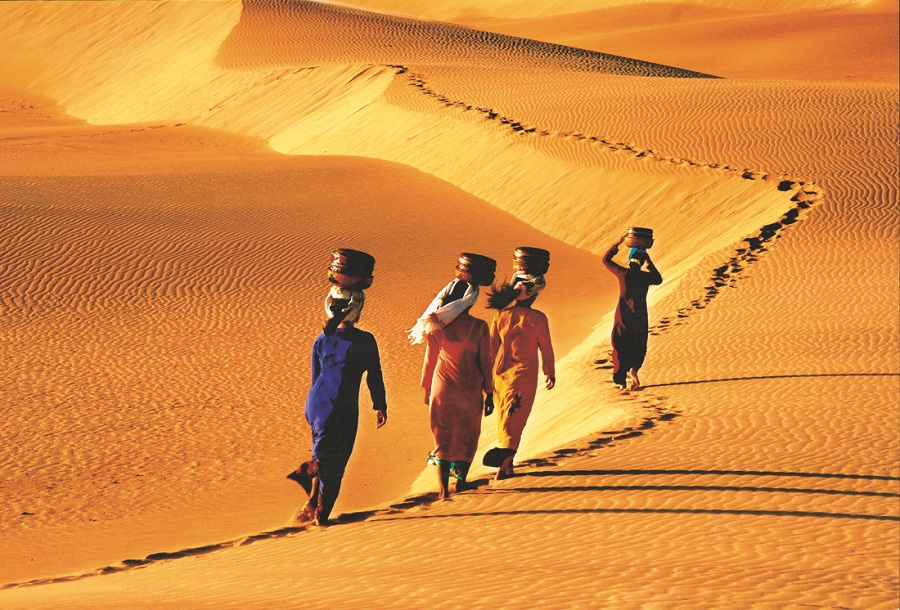
With about 100,000 inhabitants, Cham (Cham, Chiem, Hoi) ethnic group originates from Ancient Cham Pa Kingdom. They live mainly in Ninh Thuan, Binh Thuan, Binh Dinh, Phu Yen. Belonging to MaLai-Da Dao linguistic group, the Cham people remains influenced by matriarchy and Indian culture. The ancient Cham writing is Sanskrit-based. Hinduism and Mohammedanism are their principal religions.
THE UNIQUE CHAM CULTURE
The Cham culture is a unique tradition, contributing much to the diversity and richness of the Vietnamese multi-ethnic culture. From the first century AD, the Cham people received deep influences from Indian culture. In the 7th century AD, Cham Pa was already a kingdom with a capital in TraKieu (now Quang Nam) with a temple dedicated to the Indian Valmiki and his famous epic, the Ramayana.
By the middle of the 8th century AD, their capital was shifted to Nha Trang and five years later to Dong Duong, 15 km away from Tra Kieu in the southeast. The Cham are one of the 53 ethnic groups in Vietnam and comprise various subgroups. There are around 98,000 Cham people, including the Cham Hroi in Binh Dinh, Phó Yen and those living in Ninh Thuan, Binh Thuan and other parts of southern Vietnam. Inhabiting a large area, the Cham also have many diversified customs and social practices. While most of the Cham in HoChiMinh City, AnGiang and Tay Ninh, and the Cham from Cambodia follow Islam, those living in Binh Thuan, Ninh Thuan provinces follow Brahmanism. Islam is modified to suit the people here and is called 'Bani'. The Cham language is of the Malayo-Polynesian family and is spoken by about 250,000 people (G. Moussay, Dictionaire Cham-Vietnamien-Francais, published by Phan Rang Culture Centre 1971). However, it does not necessarily follow that the Cham in different regions can fully understand each other. It is natural that the Cham borrow local words and expressions at the place they reside, mainly from Kho Me and Vietnamese. In terms of their script, only the Cham Dong (in Binh Thuan, Ninh Thuan provinces) have preserved their original script. The Cham script is now being taught at elementary school to help maintain this unique linguistic tradition. The Cham also utilised the Akhar Thrah scripts from Nam An which has been incorporated into present-day Cham scripts. Ancient texts written on papyrus or paper used both of these scripts and include various epics and love stories such as the Devamuno Inra Patra, Ummurup, Cambini, Bini-Cam, Sah Pakei, Patauw Kamai, Patauw adat Likei etc. This ancient literature gives a clear picture of the life and society of the Cham through history. Together with academic literature, the Cham also have very rich popular literature which comprises hundreds of stories, sayings, idioms, puzzles, songs etc., which make up a precious literary tradition. Cham people have songs for fishing using the 'vai chai' rhythm (pwoc jah), betrothals (danh dom da ra), milling rice (danh rasung chai) etc. These rhythms are also sung during festivities with dances which have become a real attraction to spectators. Surely the greatest and most unique contribution from the Cham culture is their architecture and carvings.
Historical stupa compounds inMy Son (Quang Nam-Da Nang), Thap Ba (Nha Trang), Thap Cham (Ninh Thuan) and various Tara statues in Dong Duong, and Apsaras in TraKieu have all had their position confirmed in the Southeast Asian sculptural tradition.
Though most of these works were created for religious purposes and stemmed from Brahmin spiritualism, they became popularised and part of the Cham national culture. As such, the Indian-inspired Vishnus, and Shivas went through considerable transformations and became more human when recreated by Cham artisans. In the present day, the Cham people have adjusted their lives to local conditions. People in Tay Ninh mostly work in agriculture, fishing and commerce while those who live near HoChi Minh City have developed an urban lifestyle. The majority, however, still maintain traditional professions like cultivation, husbandry, weaving and ceramic production. Cham handicrafts are now exported to various countries where they are highly appreciated due to their unique style and high quality workmanship. (VNS)